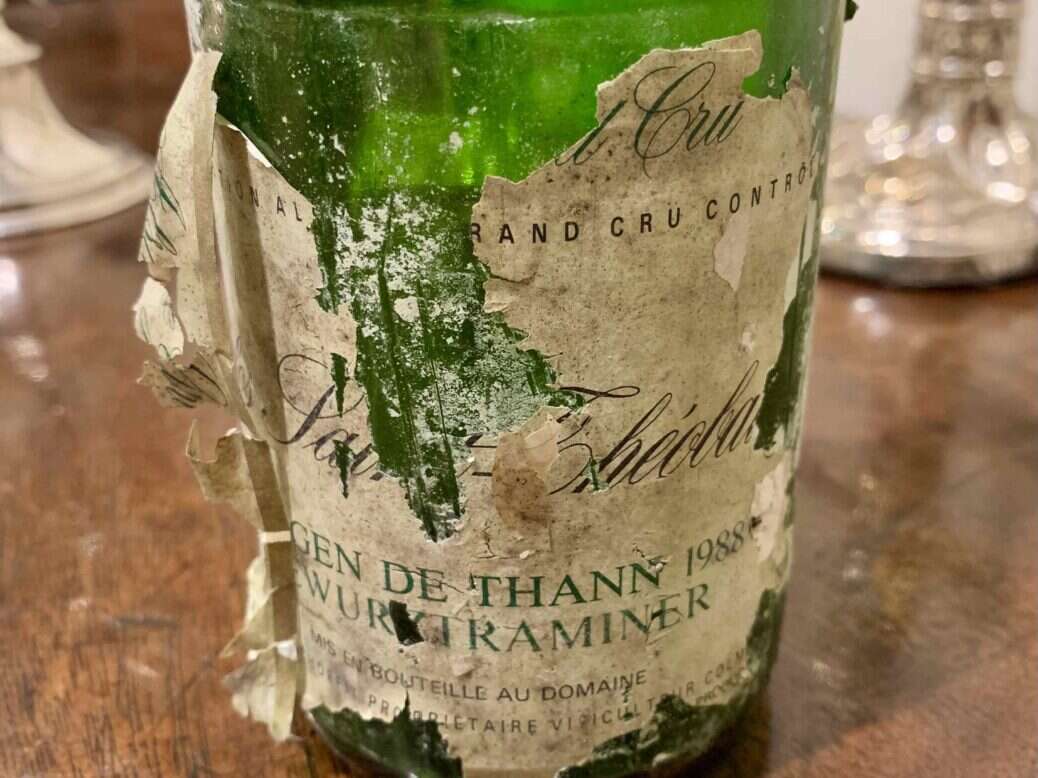
To mark the end of the year on worldoffinewine.com, we asked our writers to reflect on the bottles that meant most to them in 2021. For Joanna Simon the bottle in question was a rare lost gem of an Alsace Gewurztraminer that she uncovered during a house move.
In terms of drinking, rather than just tasting wine, I have had a year like no other. It has nothing to do with Covid and everything to do with moving house; never easy even in the good times, but even less so in full lockdown. House-move stories are like birthing stories—always best left for another time—so, I’ll just say that shifting hundreds upon hundreds of bottles of wine when, as it emerged, there was a global shortage of cardboard boxes, was extremely taxing. Having exchanged contracts on our sale and our purchase, we completed on the appointed day only thanks to UK company Sensible Wine Services, whom I contacted in despair at the 11th hour. They saved the situation (and financial penalties) by bringing 150 boxes.
A full inventory
The reason for packing up my cellars myself was to take a full inventory, the first since the last house move 24 years earlier. All sorts of surprises emerged: Complete dozens I’d forgotten about; single last bottles from individual cases—I have a bad case of Last Bottle Syndrome, the overriding symptom of which is reluctance to open the last bottle from any dozen (or more). And then there were bottles I had simply put in the wrong place. A Domaine Bernard Schoffit Clos Saint-Théobald Rangen de Thann Gewurztraminer 1988, was one of the latter, inadvertently cellared with the Alsace Rieslings.
Its long sojourn had been in perfect conditions: horizontal, untouched in an unvarying, very cold, damp, dark cellar. Even so, opening it on a freezing February evening three weeks after the move, I expected its final destination to be the kitchen sink, or, if I was lucky, some pan juices. It wasn’t the quality of the producer, the terroir of the Clos (a monopole), or the grand cru that I doubted, it was the grape variety. More than 30 years could test grand cru Riesling, but Gewurztraminer… I usually think of grand cru Gewurztraminer as a four-to-seven year wine. A good one could last longer, but why bother? Or so I thought. Three-plus decades is also a test of any cork.
I opened it with all the care I could muster—the trusty corkscrew I use for retrieving broken corks at the ready. I didn’t need it. The cork was neither dried out and friable nor completely saturated; there was some “travel,” as the Australians say, but it was well clear of the top. A promising start but I still wasn’t anticipating anything good to come of it.
Pure concentration
Wiping the top of the bottle, I sniffed: a vague smell of dank, old cellars, but I couldn’t really say more than that. I poured gingerly: Mid yellow—not old-gold, certainly not amber and no opacity; slightly viscous (14% abv). Nose down, I could hardly believe what I was smelling: Lychee—intense, clean, vivid—as characteristic of Gewurztraminer as it could be; and behind the lychee, powerful, stony, smoky minerality, with whisps of honey and apricot. Not a positively youthful Gewurz nose, but unquestionably fresh. The palate was pure concentration—clear, rich, dry, vinous, slightly oily in texture (positively so) and carried by trilling acidity. On and on. Operatic. We finished the bottle, good to the end. And my Last Bottle Syndrome is even more incurable.
More in this series
Terry Theise: Journal of a quiet year with wine
Stuart Walton: My dinner with Brunello di Montalcino
Andrew Jefford: Bacchus in Riga
Jim Clarke: Bluet, Maine’s sparkling blueberry wine
Francis Percival: Thévenet in time
Simon Field MW: Krug Clos du Mesnil sparkles in Sweden






